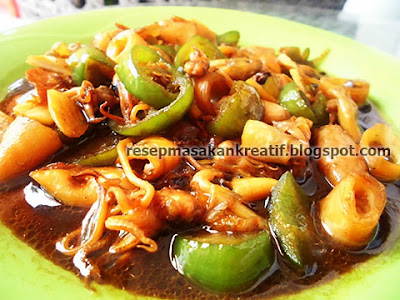
#10,377
Last week’s FluView report on 1 Novel (H3N2v) Flu Case Reported In Minnesota marked the 375th known swine variant flu infection of a human over the past decade in the United States. As surveillance and testing is very limited, this number likely represents a small fraction of actual infections (see CID Journal: Estimates Of Human Infection From H3N2v (Jul 2011-Apr 2012).
During the 2012 outbreak, associated with attendance of state and county fairs in the Midwest, more than 300 cases were detected. Most were mild, and none of these viruses maintained transmission in the community (see EID Journal: H3N2v Swine To Human Transmission At Agricultural Fairs – 2012).
Although it hasn’t happened often - in 2009, we saw a swine-origin H1N1 virus, after kicking around in swine herds for a decade – adapt well enough to human physiology to spark the first pandemic in more than 40 years. While not a particularly severe pandemic, this event showed that pigs can generate a pandemic virus as well as birds.
While avian flu viruses are of great concern – particularly because of the observed high mortality rates in humans when infected with certain H5 and H7 strains – most of them fall between the H4 to H16 subtypes – none of which are known to have sparked a pandemic in the past.
There are some who wonder whether a non-H1, H2, or H3 virus has the `right stuff’ to spark a pandemic (see Are Influenza Pandemic Viruses Members Of An Exclusive Club?).
Going back 125 years, only H1, H2 & H3 subtypes have sparked major epidemics, subtypes that typically circulate most often in humans and pigs (there are H1, H2, & H3 avian viruses as well).
125 Years of Pandemics – Credit ECDC
While this doesn’t preclude an H5 or an H7 avian virus from adapting enough to spark a pandemic, it is generally thought that novel or variant H1, H2 and H3 viruses have less of an evolutionary `leap’ to make. Which puts pigs high on our suspect when it comes to novel flu strains.
![Reassortant pig[6] Reassortant pig[6]](https://blogger.googleusercontent.com/img/b/R29vZ2xl/AVvXsEhH3Fref-rRIvwFs0TUJhE0aNbcHs1hq_auF2UahYWjADFIJdmVWI2DyaVheneaX6rfWF4sBgGydmpQN_92eg-QjzDptfCJ0T-n3Ja1KfGkHuTuZVGHpQzFpzJOa2CO5yVLX23zlByDhvK9/?imgmax=800)
Since pigs can be infected by more than one flu virus at the same time, it is also possible for two viruses to swap genetic material (reassort), resulting in a new hybrid strain.
Here in North America we’ve been watching the evolution of several swine variant viruses (H1N1v, H1N2v, H3N2v) over the past few years, all of which have reassorted with - and picked up the M gene segment from – the 2009 H1N1 virus (see Keeping Our Eyes On The Prize Pig).
Not only are pigs excellent hosts and `mixing vessels’ for influenza, they tend to have a fair amount of contact with humans; on the farm, at county and state fairs, and at live markets. Places where humans can either pass their flu viruses onto pigs (reverse zoonosis), or catch swine variant viruses and potentially carry them into the community.
Hence the development of this year;s CDC Interim Guidance for Workers who are Employed at Commercial Swine Farms: Preventing the Spread of Influenza A Viruses and last year’s Measures to Minimize Influenza Transmission at Swine Exhibitions, 2014[189 KB, 6 pages].
All of which serves as prelude to a study, appearing this week in Clinical Infectious Diseases, that looks at the risks of swine variant flu transmission at live markets in the state of Minnesota. First a link, and some excerpts from the abstract, then a look at CIDRAP’s report on this last night.
Mary J. Choi1,*, Montserrat Torremorell2,*, Jeff B. Bender2, Kirk Smith3, David Boxrud3, Jon R. Ertl2, My Yang2, Kamol Suwannakarn2, Duachi Her3, Jennifer Nguyen3, Timothy M. Uyeki1, Min Levine1, Stephen Lindstrom1, Jacqueline M. Katz1, Michael Jhung1, Sara Vetter3, Karen K. Wong1, Srinand Sreevatsan2, and Ruth Lynfield3
Abstract
(EXCERPT)
Results. Nasal swabs from 11 (65%) of 17 employees tested positive for IAVs by rRT-PCR; seven employees tested positive on multiple occasions and one employee reported influenza-like illness. Eleven (73%) of 15 employees had baseline hemagglutination-inhibition antibody titers ≥40 to swine-origin IAVs, but only one demonstrated a 4-fold titer increase to both swine-origin, and pandemic A/Mexico/4108/2009 IAVs. IAVs were isolated from swine (72/84), air (30/45) and pen railings (5/21). Whole genome sequencing of 122 IAVs isolated from swine and environmental specimens revealed multiple strains and subtype codetections. Multiple gene segment exchanges among and within subtypes were observed, resulting in new genetic constellations and reassortant viruses. Genetic sequence similarities of 99%–100% among IAVs of one market customer and swine indicated interspecies transmission.
Conclusions. At markets where swine and persons are in close contact, swine-origin IAVs are prevalent and potentially provide conditions for novel IAV emergence.
This summary from CIDRAP’s News scan.
Flu viruses found in workers, animals at fairs
(EXCERPT)
Researchers from the CDC and Minnesota obtained samples from two markets that were epidemiologically linked to people with infections of variant swine-origin flu. Nasal swabs from 11 of 17 employees (65%) tested positive for influenza A, and 7 tested positive multiple times. Also, 11 of 15 workers (73%) had baseline hemagglutination-inhibition antibody titers of 40 or higher to swine-origin flu, and 1 had a fourfold titer increase to both swine-origin and 2009 H1N1 flu.
In addition, influenza A viruses were isolated from 72 of 84 swine (86%), from 30 of 45 air samples (67%), and from 5 of 21 railings (24%). Whole-genome sequencing of viruses isolated from swine and environmental specimens revealed multiple strains and subtype co-detections, with multiple gene segment exchanges.
Finally, genetic sequencing of viruses from a market customer and from swine indicated pig-to-human transmission or vice versa. The authors conclude that live-animal markets may provide conditions for novel flu viruses to emerge.
We’ve been fortunate that since the end of 2012 we’ve seen fewer human swine variant infections reported. Swine viruses continue to circulate and evolve (see last year’s USDA IAV-S Surveillance Program Detects Novel H3N1 In US Swine), however, and so the threat has not gone away.


















 src="https://blogger.googleusercontent.com/img/b/R29vZ2xl/AVvXsEh4zgoKkY5esDyGDfXmhp5tz0W8H2jEgsRJx2wm9317hpr6CTdO8i4DPQj5mF-OAprw6GVcNt84Pt9Yp5U6XEz5h_pAP7azclFEO7kSUzDjr31IvLdzT01usqHnjVk1bBWsqpHQX6G4AIU/s1600/Photo0783.jpg" />
src="https://blogger.googleusercontent.com/img/b/R29vZ2xl/AVvXsEh4zgoKkY5esDyGDfXmhp5tz0W8H2jEgsRJx2wm9317hpr6CTdO8i4DPQj5mF-OAprw6GVcNt84Pt9Yp5U6XEz5h_pAP7azclFEO7kSUzDjr31IvLdzT01usqHnjVk1bBWsqpHQX6G4AIU/s1600/Photo0783.jpg" />












